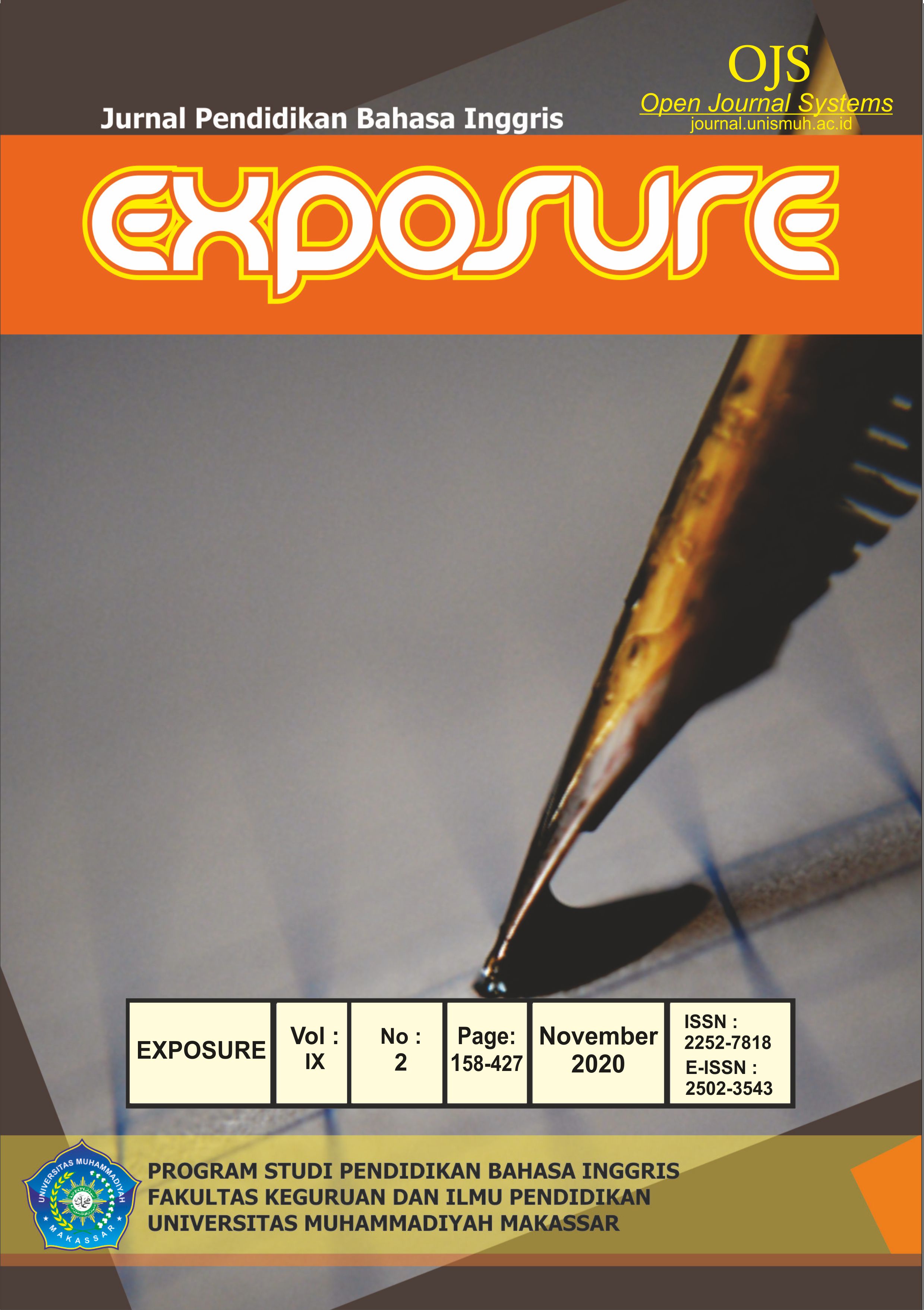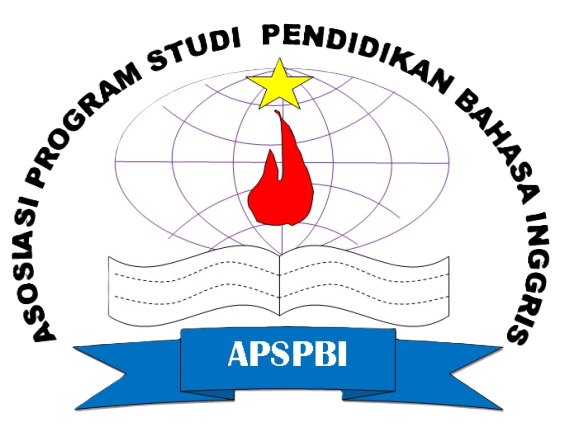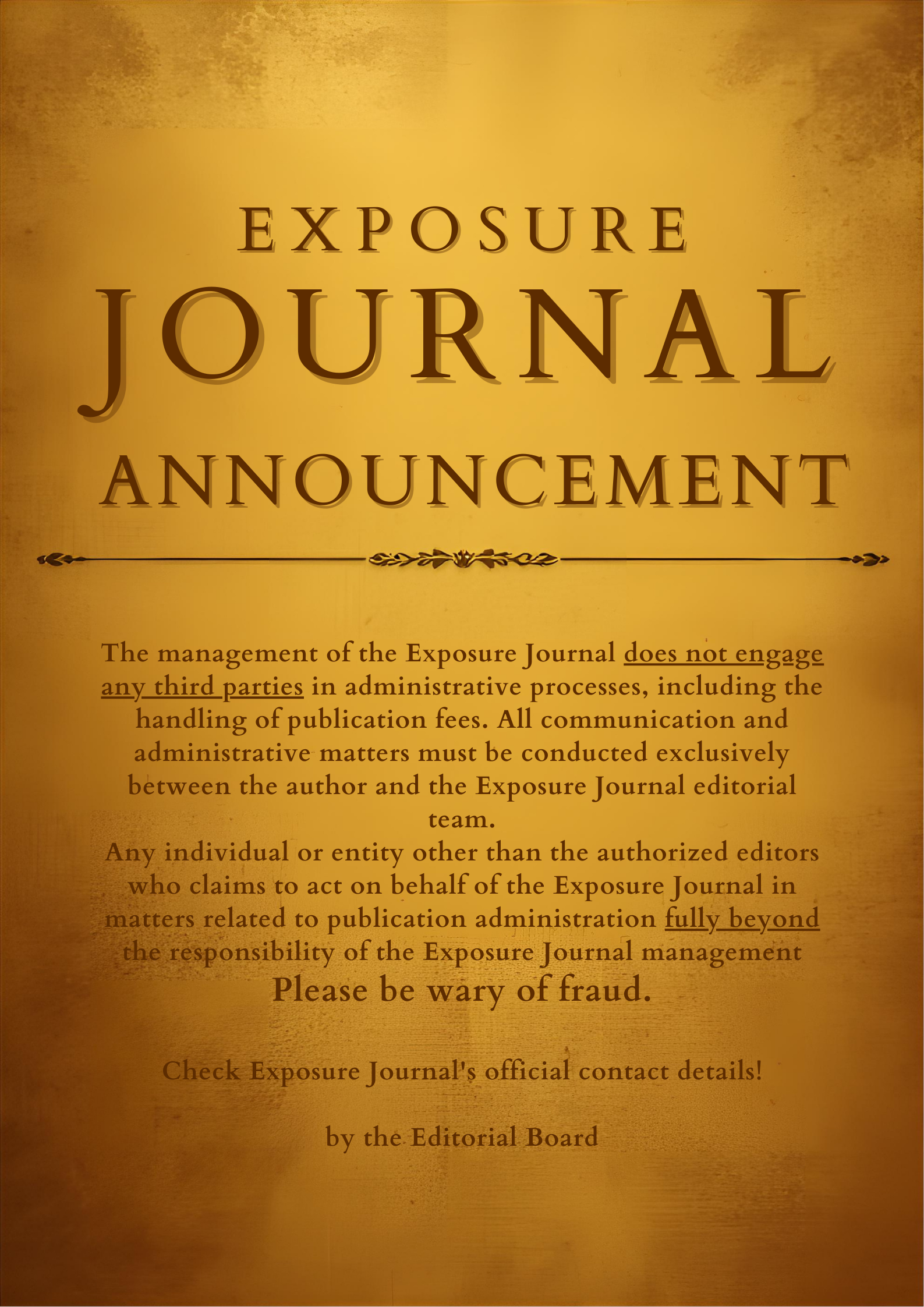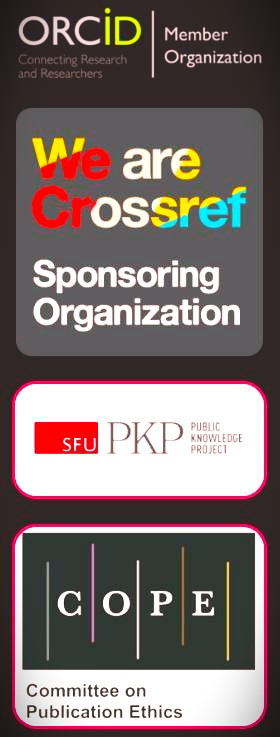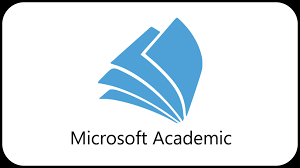DEVELOPING AN EXTENDED FLIPPED CLASSROOM FOR TEACHING ENGLISH AT PRIMARY SCHOOL: THE PLAN, FLIP, ASSESS, REFLECT (PFAR) MODEL
DOI: https://doi.org/10.26618/exposure.v9i2.4182
Flipped classroom, PFAR model, Interactive learning, Teaching English, Primary school, Covid-19
Abstract
It is widely known that teacher-centered learning still dominates the current teaching and learning practice. This practice leads to an ineffective learning process since the students are not optimally engaged in it. Additionally, the teachers’ challenge is growing due to the implementation of online learning during the Covid-19 pandemic.To address these challenges, this study developed a flipped classroom named the Plan, Flip, Assess, and Reflect (PFAR) model for teaching English at primary school. This model is able to transform the traditional learning into an interactive learning process by mixturing online and face-to-face learning. The PFAR model consists of four steps: 1) planning the lesson; 2) flipping the lesson; 3) assessing learning; and 4) reflecting upon learning. The steps in developing this model include 1) need analysis; 2) design and development; 3) validation and revision; 4) preliminary field test; 5) product revision; 6) main field test; and 7) final revision and dissemination. These processes lead to a production of the PFAR model. The result of validation revealed that the quality of the PFAR model was between good and excellent. They agreed that the PFAR model is beneficial for English teachers at primary school.The result of experiment also indicated that the PFAR model had a significant effect on the students’ English speaking skill. It significantly improved the students’ speaking skill. English teachers of primary school can directly adopt or adapt the PFAR model to create an effective and interactive learning process after the Covid-19 pandemic.
References
Atmojo, A. E. P., & Nugroho, A. (2020). EFL classes must go online! Teaching activities and challenges during COVID-19 pandemic in Indonesia. Register Journal, 13(1), 49–76. https://doi.org/10.18326/rgt.v13i1.49-76
Bergmann, J., & Sams, A. (2012). Flip your classroom. International Society for Technology in Education.
Buitrago, C. R., & Diaz, J. (2017). Flipping your writing lessons: Optimizing time in your EFL writing classroom. In Innovations in Flipping the Language Classroom: Theories and Practices. https://doi.org/10.1007/978-981-10-6968-0_7
Creswell, J. W., & Creswell, J. D. (2018). Research design: qualitative, quantitative, and mixed methods approaches. Los Angeles: SAGE Publications, Inc.
Daniel, S. J. (2020). Education and the COVID-19 pandemic. Prospects, (0123456789). https://doi.org/10.1007/s11125-020-09464-3
Dhawan, S. (2020). Online learning: a panacea in the time of COVID-19 crisis. Journal of Educational Technology Systems, 49(1), 5–22. https://doi.org/10.1177/0047239520934018
Fauzi, I., & Sastra Khusuma, I. H. (2020). Teachers’ elementary school in online learning of COVID-19 pandemic conditions. Jurnal Iqra’ : Kajian Ilmu Pendidikan, 5(1), 58–70. https://doi.org/10.25217/ji.v5i1.914
Goldstein, B. 2017. A history of video in ELT. In The Image in English Language Teaching. ELT Council.
Gooch, D. L. (2013). Research, development, and validation of a school leader’s resource guide for the facilitation of social media use by school staff. Dissertation Abstracts International Section A: Humanities and Social Sciences, 73(10-A (E)). Retrieved from http://gateway.proquest.com
Guo, J. (2019). The use of an extended flipped classroom model in improving students’ learning in an undergraduate course. Journal of Computing in Higher Education, 31, 362–390. https://doi.org/10.1007/s12528-019-09224-z
Mohamed Jamrus, M. H., & Razali, A. B. (2019). Using self-assessment as a tool for English language learning. English Language Teaching, 12(11), 64. https://doi.org/10.5539/elt.v12n11p64
Johnson, R. B., & Christensen, L. (2014). Educational research: quantitative, qualitative, and mixed approaches. Los Angeles: SAGE Publications, Inc.
Lee, J., Lim, C., & Kim, H. (2017). Development of an instructional design model for flipped learning in higher education. Educational Technology Research and Development, 65(2), 427–453. https://doi.org/10.1007/s11423-016-9502-1
Lo, C. K., & Hew, K. F. (2017). A critical review of flipped classroom challenges in K-12 education: possible solutions and recommendations for future research. Research and Practice in Technology Enhanced Learning, 12(1). https://doi.org/10.1186/s41039-016-0044-2
Luo, Z., O’Steen, B., & Brown, C. (2020). Flipped learning wheel (FLW): a framework and process design for flipped L2 writing classes. Smart Learning Environments, 7(1). https://doi.org/10.1186/s40561-020-00121-y
Mehring, J. (2017). The flipped classroom. In Innovations in Flipping the Language Classroom: Theories and Practices. https://doi.org/10.1007/978-981-10-6968-0_7
Ramirez, M. (2017). Flipping a pronunciation lesson for a teacher training course. In Innovations in Flipping the Language Classroom: Theories and Practices. https://doi.org/10.1007/978-981-10-6968-0_7
Reidsema, C., Hadgraft, R., & Kavanagh, L. (2017). Introduction to the flipped classroom. In The Flipped Classroom: Practice and Practices in Higher Education. DOI 10.1007/978-981-10-3413-8_1
The Ministry of Education and Culture. (2020). Penyesuaian kebijakan pembelajaran di masa pandemi Covid-19. Retrieved from https://www.kemdikbud.go.id
Taylor, S. J., Bogdan, R., & DeVault, M. L. (2016). Introduction to qualitative research methods: a guidebook and resource. New Jersey: John Wiley & Sons, Inc.
Teng, M. F. (2017). Flip your classroom to improve EFL students’ speaking skills. In Innovations in Flipping the Language Classroom: Theories and Practices. https://doi.org/10.1007/978-981-10-6968-0_7
Downloads
Published
How to Cite
Issue
Section
License
Authors who publish with this journal agree to the following terms:
In order to assure the highest standards for published articles, a peer review policy is applied. In pursue of the compliance with academic standards, all parties involved in the publishing process (the authors, the editors and the editorial board and the reviewers) agree to meet the responsibilities stated below in accordance to the Journal publication ethics and malpractice statement.
Duties of Authors:
- The author(s) warrant that the submitted article is an original work, which has not been previously published, and that they have obtained an agreement from any co-author(s) prior to the manuscript’s submission;
- The author(s) should not submit articles describing essentially the same research to more than one journal;
- The authors(s) make certain that the manuscript meets the terms of the Manuscript Submission Guideline regarding appropriate academic citation and that no copyright infringement occurs;
- The authors(s) should inform the editors about any conflict of interests and report any errors they subsequently, discover in their manuscript.
Duties of Editors and the Editorial Board:
- The editors, together with the editorial board, are responsible for deciding upon the publication or rejection of the submitted manuscripts based only on their originality, significance, and relevance to the domains of the journal;
- The editors evaluate the manuscripts compliance with academic criteria, the domains of the journal and the guidelines;
- The editors must at all times respect the confidentiality of any information pertaining to the submitted manuscripts;
- The editors assign the review of each manuscript to two reviewers chosen according to their domains of expertise. The editors must take into account any conflict of interest reported by the authors and the reviewers.
- The editors must ensure that the comments and recommendations of the reviewers are sent to the author(s) in due time and that the manuscripts are returned to the editors, who take the final decision to publish them or not.
Authors are permitted and encouraged to post online a pre-publication manuscript (but not the Publisher’s final formatted PDF version of the Work) in institutional repositories or on their Websites prior to and during the submission process, as it can lead to productive exchanges, as well as earlier and greater citation of published work (see The Effect of Open Access). Any such posting made before acceptance and publication of the Work shall be updated upon publication to include a reference to the Publisher-assigned DOI (Digital Object Identifier) and a link to the online abstract for the final published Work in the Journal.

